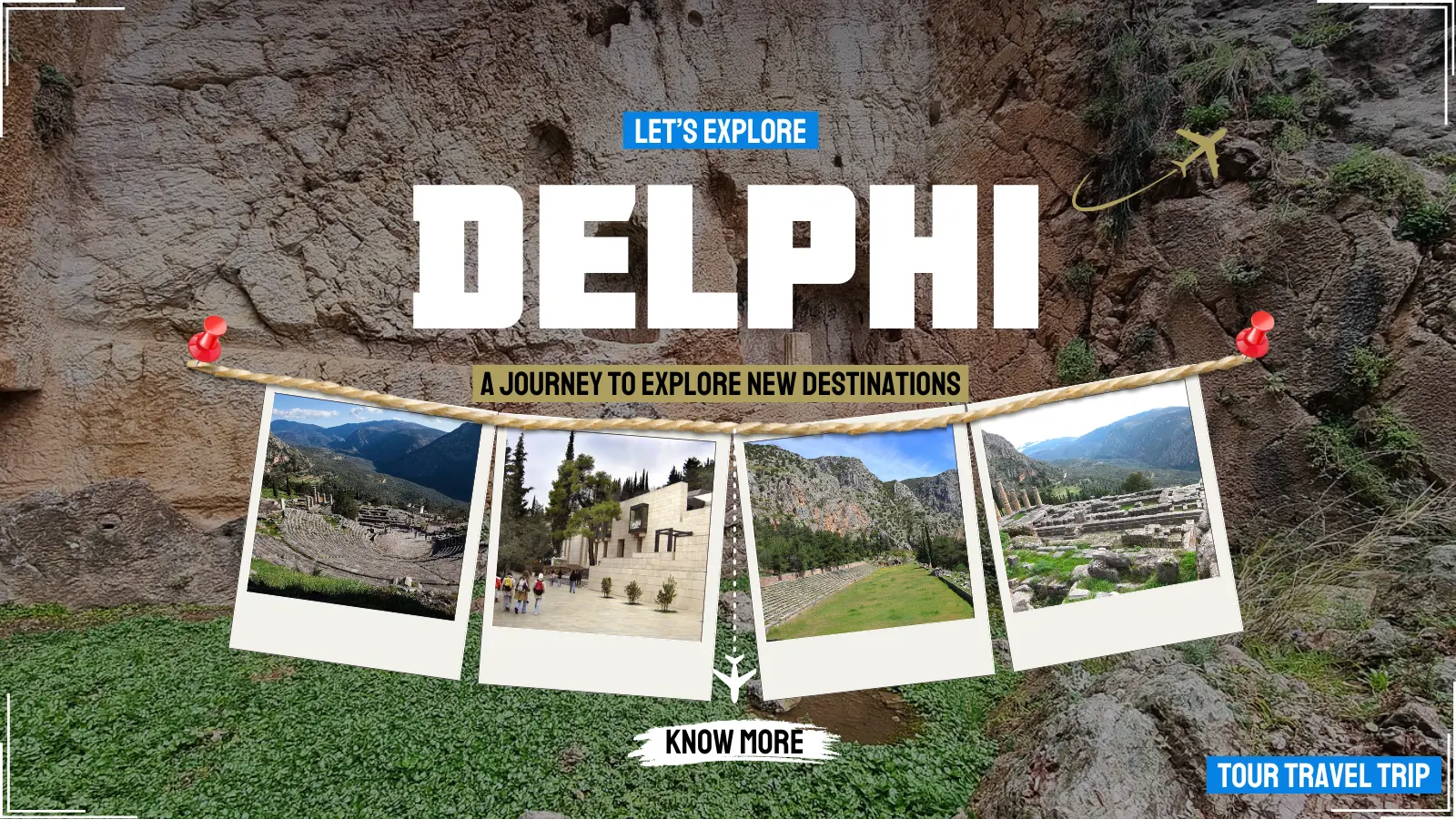LAST UPDATED ON: 28/08/2025
Welcome to Delphi: The Center of the Ancient World!
Discover the top Places to Visit in Delphi, Greece that showcase the stunning beauty and rich history of this remarkable region.
Imagine standing on the side of a huge mountain, with giant cliffs called the “Shining Rocks” towering over you and a deep green valley stretching out below like a giant olive-tree carpet.1 This is Delphi, a place so beautiful and mysterious that thousands of years ago, the ancient Greeks believed it was the most special spot on Earth.
The stories they told about Delphi are as amazing as the view. One famous legend says that Zeus, the king of all the gods, wanted to find the exact center of the world. To do this, he released two golden eagles from opposite ends of the Earth. The eagles flew and flew until they finally met right here, in Delphi! To mark this incredible spot, Zeus dropped a sacred stone from the sky called the omphalos, which means “navel” in ancient Greek. That’s why Delphi is often called the “belly button of the world”.1
But the story doesn’t stop there. At first, this sacred place belonged to Gaea, or Mother Earth, and it was guarded by her giant serpent child, Python.3 Then, along came a new god, Apollo—the god of sunlight, music, poetry, and telling the future. Apollo was powerful and brave, and he fought the mighty Python and won, making Delphi his own special home.1
Because Apollo could see the future, Delphi became the home of the most famous fortune-teller in the ancient world: the Oracle of Delphi. The Oracle was a wise priestess, called the Pythia, who would sit in Apollo’s temple. People believed that Apollo would speak through her, sharing his secrets and advice.3 Kings, generals, and ordinary people would travel for weeks or even months to ask the Pythia important questions, like whether they should start a war, build a new city, or even who they should marry.6
Today, Delphi is like a giant, open-air storybook. The buildings are now ancient ruins, but they are filled with the magic of these old myths and legends. It is such an important place that it has been named a UNESCO World Heritage Site, meaning it’s a treasure for the whole world to protect and enjoy.2 Get ready for an adventure back in time as we explore the seven most amazing places to visit in the belly button of the world!
Your Adventure Map: 7 Must-See Wonders of Delphi
Before we start our adventure, here is a handy chart with all the important information you’ll need for your visit. Most of the amazing places on our list are inside the main archaeological park, and one ticket gets you into both the park and the museum. This makes planning your day super easy!
Table 1: Delphi At-a-Glance: Visitor Information
| Information | Summer Season (April 1 – October 31) | Winter Season (November 1 – March 31) |
| Archaeological Site Hours | April 1 – Aug 31: 8:00 AM – 8:00 PM Sept 1 – 15: 8:00 AM – 7:30 PM Sept 16 – 30: 8:00 AM – 7:00 PM Oct 1 – 15: 8:00 AM – 6:30 PM Oct 16 – 31: 8:00 AM – 6:00 PM (Last entry is 20 minutes before closing)9 | 8:30 AM – 3:30 PM (Last entry is 20 minutes before closing)9 |
| Museum Hours | Mon, Wed-Sun: 8:00 AM – 8:00 PM Tuesday: 10:00 AM – 5:00 PM9 | 8:30 AM – 3:30 PM 9 |
| Combined Ticket Price | Full: €20Reduced: €1011 | Full: €20Reduced: €1011 |
| Important Note | Your ticket is valid for both the main Archaeological Site and the Delphi Archaeological Museum.10 The site is closed on major holidays like January 1, March 25, May 1, Easter Sunday, December 25, and December 26.9 |
1. The Temple of Apollo: Home of the Famous Oracle
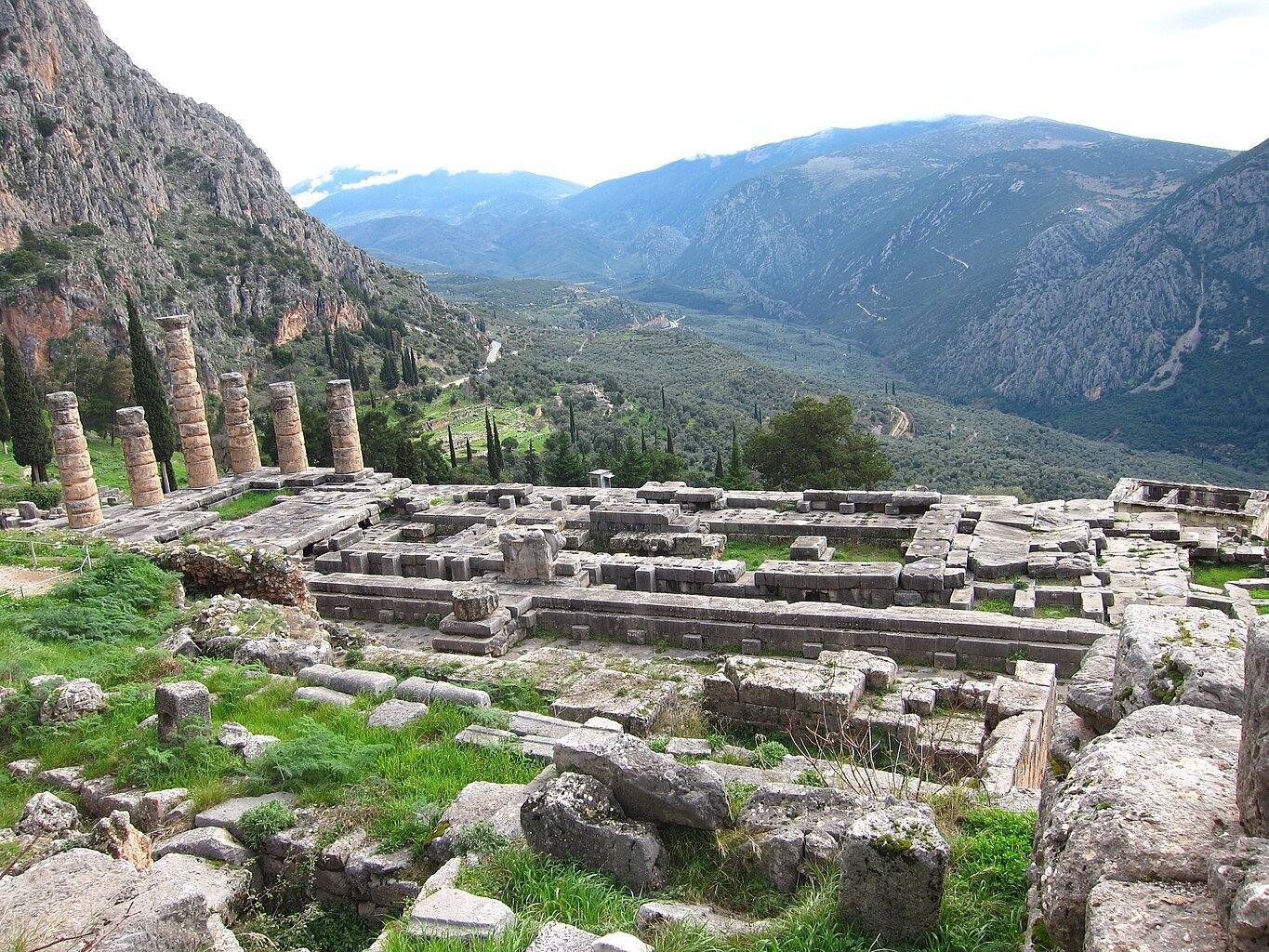
Introduction
This is it—the heart of ancient Delphi! The Temple of Apollo was the most important and sacred building on the whole mountain.3 This was the house of the god Apollo, and it was inside this very temple that the Pythia, the famous Oracle, would give her prophecies. Imagine her sitting on a special three-legged stool called a tripod, which was placed over a crack in the earth from which magical vapors were believed to rise, allowing Apollo to speak through her.6 Carved on the entrance to the temple were famous words of wisdom for all visitors to see, like “Know Thyself” and “Nothing in Excess”—like a secret code for living a good life.7
| Location | The Temple of Apollo sits in the middle of the main archaeological site. You will find it as you walk up the main path, called the Sacred Way.3 |
| Timing | The temple is part of the main archaeological site, so its opening times are the same as those listed in the table above. |
| How to Reach There | Once you enter the archaeological site, you just need to follow the winding path, the Sacred Way, uphill. The temple is the huge building at the top of this path, so you can’t miss it. |
| Important Tips | As you walk up the ramp to the temple’s entrance, take a moment to stop. Imagine you are an ancient Greek who has traveled for weeks to ask the Oracle a very important question. What would you ask? This is a fantastic spot for a family photo, with the giant columns reaching for the sky behind you. |
| Entry Fees | Access to the Temple of Apollo is included in your main ticket for the archaeological site.17 |
| Things to Keep in Mind | The temple you see today is a ruin, which means only parts of it are still standing. You will see the huge stone floor and a few of the massive columns that have been put back together.8 You’ll need to use your imagination to picture how grand it must have been, with a roof, painted statues, and crowds of people waiting for their turn to hear the Oracle’s words. |
2. The Delphi Archaeological Museum: A Treasure Chest of History
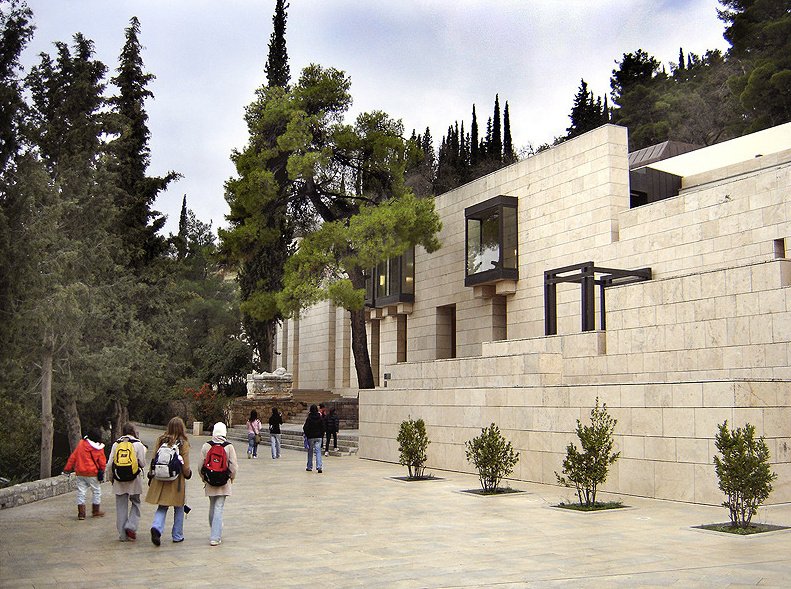
Introduction
Get ready to see some real-life treasure! The Delphi Archaeological Museum is like a giant treasure chest that holds all the amazing statues, gold, and art that were found buried at the ancient site.18 This is where the past really comes to life. Inside, you will find some of the most famous statues in the world. Don’t miss the
Charioteer of Delphi, a life-sized bronze statue of a chariot racer. He looks so real you can even see his eyelashes and the veins on his feet, and his eyes are made of glass!.7 You will also meet the
Sphinx of Naxos, a huge marble statue of a mythical creature with the body of a lion, the wings of a bird, and the head of a woman.10 And, of course, you will see the real
Omphalos stone—the carved stone that marked the “belly button of the world”.7
| Location | The museum is located right next to the entrance of the archaeological site, making it very easy to visit.7 |
| Timing | The museum’s opening hours are listed in the table above. Remember that on Tuesdays during the summer, it has shorter hours than the main site.9 |
| How to Reach There | It is just a short, easy walk from the ticket booth and entrance to the main ruins. You can visit it right before or after you explore the outdoor site. |
| Important Tips | Here’s a secret that will make your whole trip to Delphi even more amazing: visit the museum FIRST!.7 Think of it like reading a comic book before you see the movie. In the museum, you will see models of what the temples and treasuries looked like when they were brand new. You’ll see the beautiful statues and carvings that once decorated them. Then, when you go outside and see the ruins, your imagination will have all the tools it needs to picture how everything looked 2,500 years ago. The piles of stone will transform into amazing buildings right before your eyes! |
| Entry Fees | The entrance fee for the museum is included in the combined ticket you buy for the archaeological site.10 |
| Things to Keep in Mind | The museum is modern and has air conditioning, making it a great place to cool off on a hot day. It is also fully accessible for anyone with a stroller or wheelchair, with elevators to get between floors.12 There is a small gift shop where you can buy books, postcards, or a small copy of a statue to take home as a souvenir from your adventure.10 |
3. The Ancient Theatre: A Stage with an Amazing View
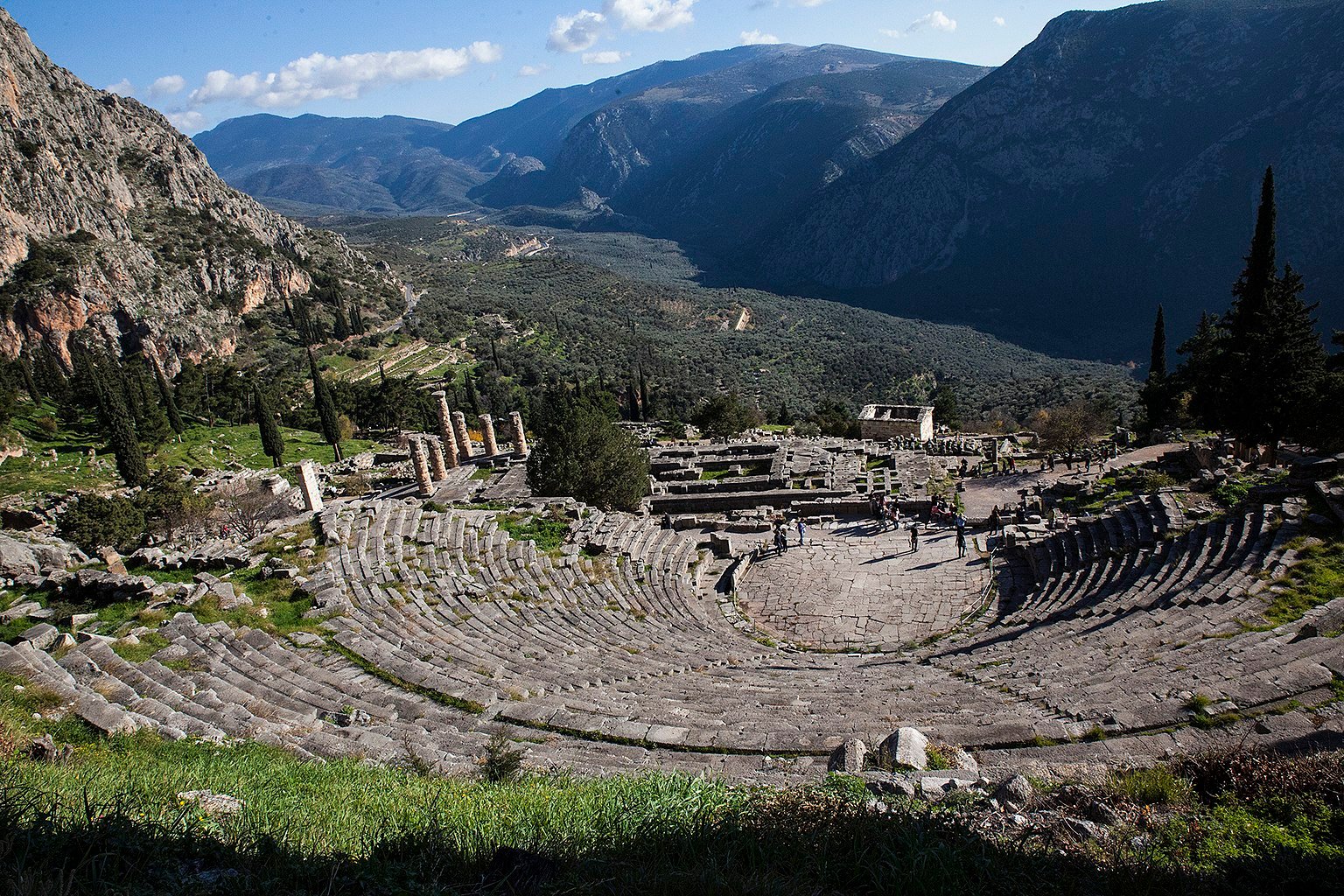
Introduction
High above the Temple of Apollo is another incredible sight: an ancient outdoor theatre! This is where thousands of people would gather to watch plays about gods and heroes and to enjoy music festivals held to honor Apollo.13 Built right into the side of the mountain, the stone seats curve around a central stage. It was big enough to hold around 5,000 spectators, which is more than many modern theaters!.13
| Location | The theatre is located inside the main archaeological site, on the hill just above the Temple of Apollo.3 |
| Timing | As part of the main site, the theatre is open during the same hours. |
| How to Reach There | After you visit the Temple of Apollo, just keep following the main path as it continues to climb up the hill. You will see the theatre rising up ahead of you. |
| Important Tips | The view from the top rows of the theatre is absolutely breathtaking! You can see the entire sanctuary spread out below you, with the Temple of Apollo, the treasuries, and the beautiful valley beyond.8 It’s the perfect place to sit down for a few minutes, have a drink of water, and just enjoy the amazing scenery. Try standing in the center of the stage and clapping your hands—you might be surprised how well the sound carries to the top seats! |
| Entry Fees | Access to the theatre is included in your main ticket for the archaeological site. |
| Things to Keep in Mind | The walk up to the theatre is a little steep, so it’s a good idea to take your time and not rush. The path is well-made, but it is a climb. The incredible view you get as your reward makes every step worth it. |
4. The Ancient Stadium: Race to the Top!
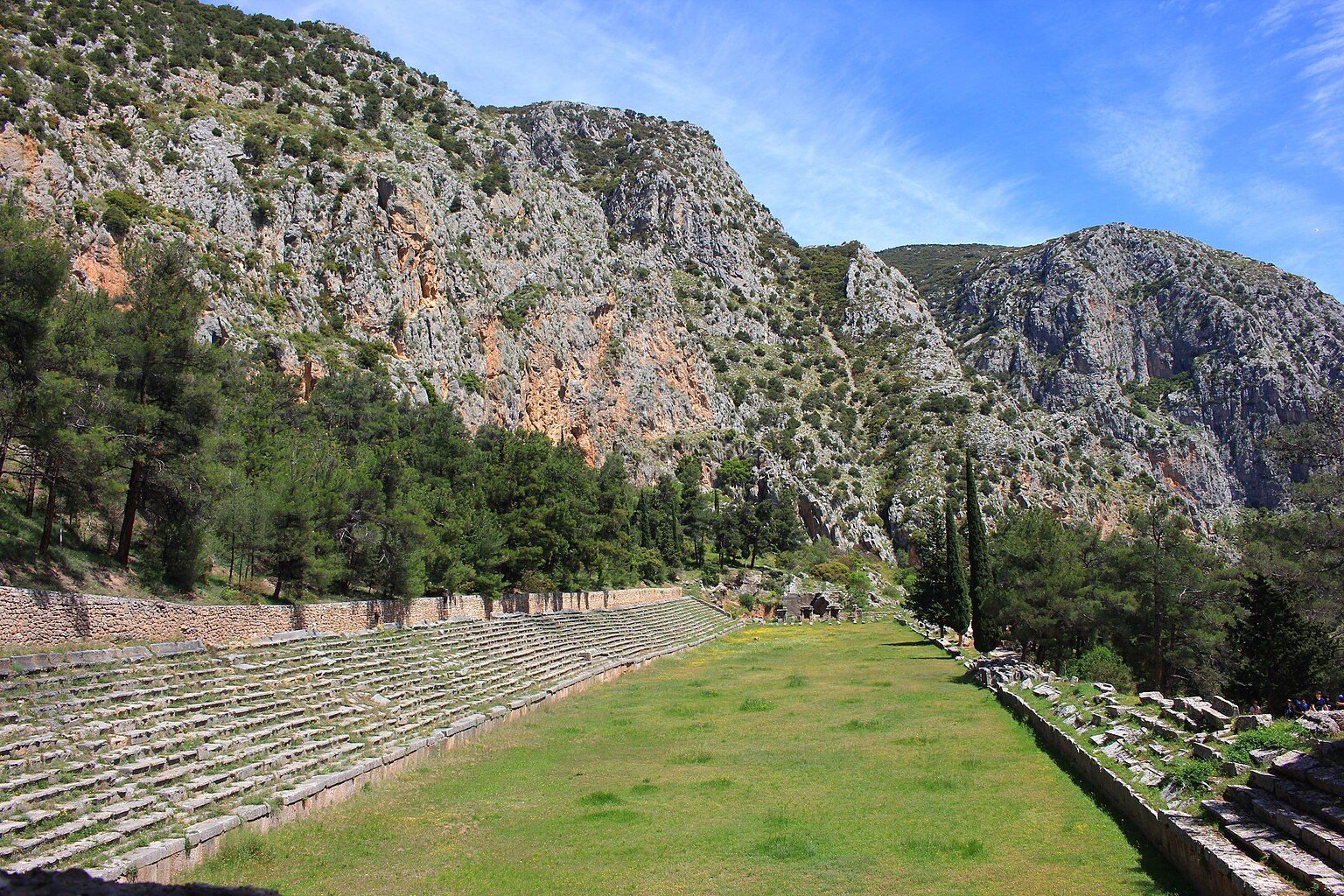
Introduction
Are you ready for the final challenge of your Delphi adventure? At the very top of the archaeological site, higher than everything else, is the Ancient Stadium.22 This is one of the best-preserved ancient stadiums in all of Greece!.24 It was here that the athletic contests of the Pythian Games took place every four years.3 These games were almost as important as the ancient Olympics. Athletes from all over Greece would come here to compete in running races. Imagine the roar of the crowd as the runners raced down the long track!
| Location | The stadium is located at the highest point of the archaeological site, a good walk uphill from the Ancient Theatre.16 |
| Timing | The stadium is part of the main archaeological site and is accessible during its opening hours. |
| How to Reach There | From the theatre, you will see a path that continues to wind its way up the mountain through a grove of pine trees. This path leads directly to the stadium. The walk takes about 10 to 15 minutes from the theatre.23 |
| Important Tips | This is a real climb, so it’s the part of your visit where you will be most thankful for comfortable walking shoes and a bottle of water.23 The journey up is an adventure in itself, and reaching the top feels like a great accomplishment. When you get there, look for the carved stone starting line at one end of the track, where the athletes would place their feet before a race.22 |
| Entry Fees | Access to the stadium is included in your main ticket for the archaeological site. |
| Things to Keep in Mind | To protect this amazing ancient structure, visitors are not allowed to walk on the track itself. However, you can walk all around the edge and see it perfectly from the stone seats.24 Because the path is steep and uneven in places, it is not accessible for strollers or wheelchairs.24 If you have very little ones, you might decide to have one parent wait with them at the theatre while the other makes the climb. |
5. The Sanctuary of Athena Pronaia: The Famous Round Temple
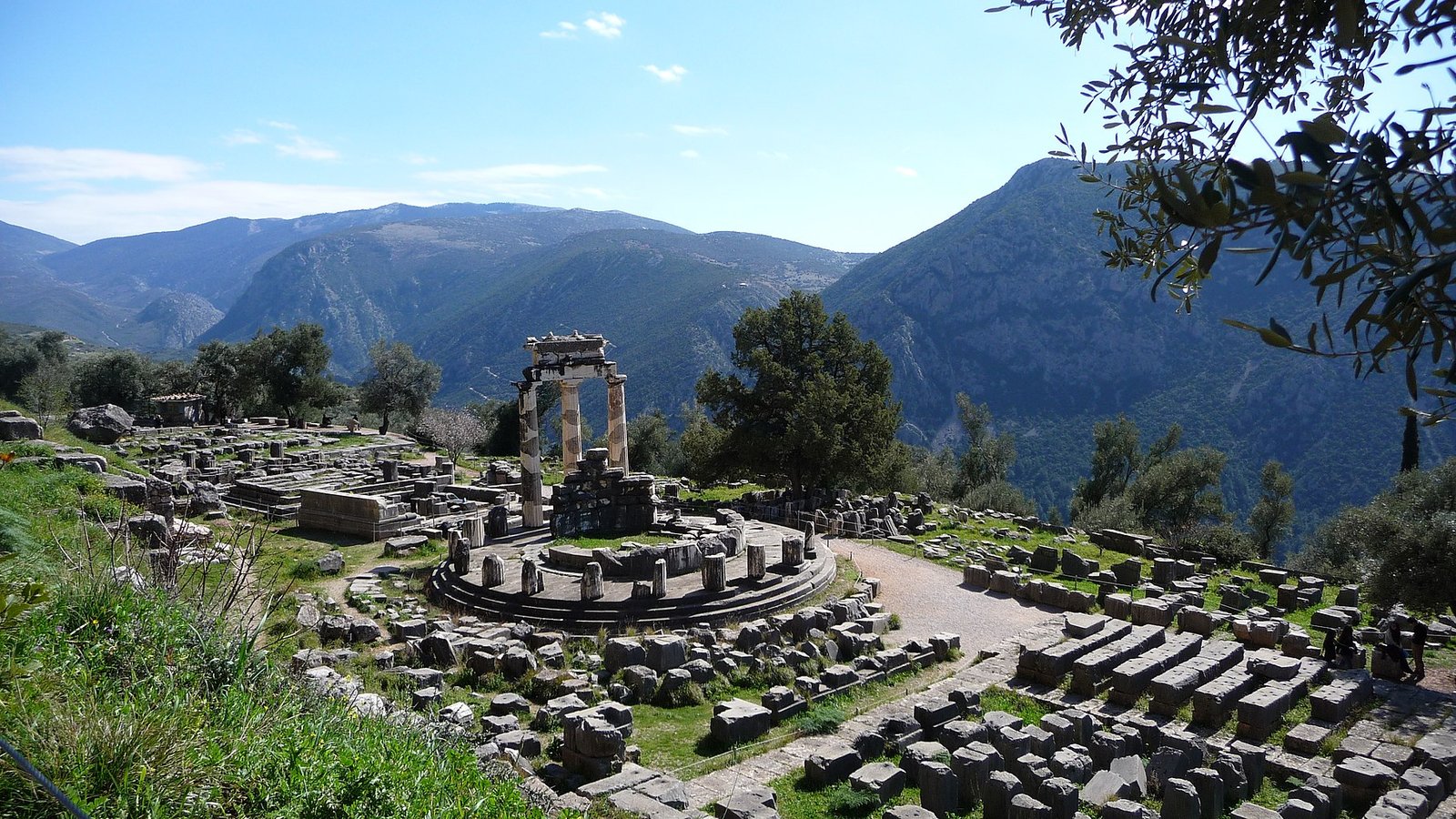
Introduction
You have probably seen a picture of this place before—it’s one of the most famous images of Greece! A little way down the road from the main site is a separate sanctuary dedicated to the goddess Athena.20 Athena was the goddess of wisdom, and the ancient Greeks believed she was the protector of Delphi and her half-brother Apollo.27 The most amazing building here is the
Tholos, a beautiful and mysterious round temple made of marble.29 What makes it so cool is that nobody is completely sure what it was used for. Was it a special place to worship a hero, or maybe a treasury to hold statues? It’s a fun puzzle from the past!
| Location | This sanctuary is located about a 10-minute walk (800 meters) east of the main archaeological site and museum, on the other side of the modern road.10 |
| Timing | This area is an open site and is generally accessible at any time during the day. |
| How to Reach There | From the entrance to the main site, walk east along the main road (away from the modern town of Delphi). After about 10 minutes, you will see a sign pointing to a path that leads down to the ruins.10 |
| Important Tips | This was the very first part of Delphi that ancient travelers would see as they approached from the east, so it served as a grand welcome gate to the sacred area.20 It is usually much quieter and less crowded than the main Sanctuary of Apollo, making it a peaceful place to explore and take some beautiful photographs. |
| Entry Fees | It is completely free to visit the Sanctuary of Athena Pronaia.10 |
| Things to Keep in Mind | Besides the famous Tholos, you can also see the foundations of two other temples that were built for Athena, as well as the ruins of two treasuries.27 It’s amazing to see how three of the original twenty outer columns of the Tholos have been carefully put back together, giving you a hint of its former beauty. |
6. The Treasury of the Athenians: A Marble Thank-You Gift
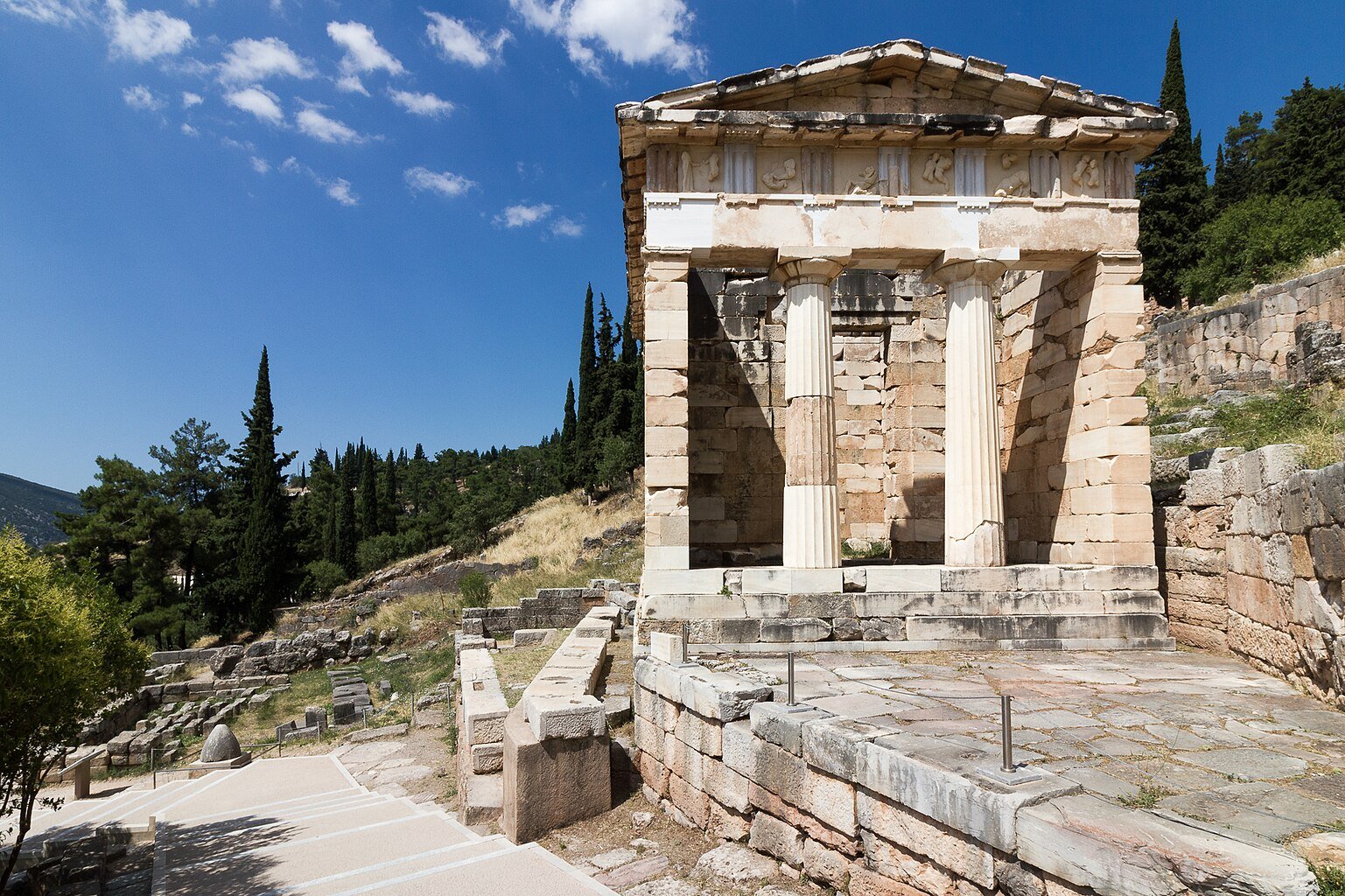
Introduction
As you walk up the main path, the Sacred Way, you will notice the stone foundations of many small, temple-like buildings. These were the “treasuries” of ancient Delphi.8 Think of them as fancy little buildings where different city-states (like ancient countries) would store their precious offerings and gifts for Apollo. The most impressive and best-preserved of them all is the Treasury of the Athenians. It has been carefully rebuilt so you can see almost exactly what it looked like!.8 It was built entirely out of beautiful white marble from the island of Paros by the people of Athens to thank Apollo for helping them win the famous Battle of Marathon against the Persians.32
| Location | The Treasury of the Athenians is located along the Sacred Way inside the main archaeological site. You will find it on your left as you go around the first big bend in the path.34 |
| Timing | It is part of the main site, so it is open during the same hours. |
| How to Reach There | You will see it easily as you begin your walk up the Sacred Way from the entrance of the site. |
| Important Tips | Get up close and look at the carved panels, called metopes, that run along the top of the building. They tell the exciting stories of two of Greece’s greatest heroes: Heracles (you might know him as Hercules) and his amazing adventures, and Theseus, the hero who bravely fought the Minotaur in the labyrinth.32 Some of the original, best-preserved carvings are now safe inside the museum. |
| Entry Fees | Access to the Treasury is included in your main ticket for the archaeological site. |
| Things to Keep in Mind | Because this treasury has been reconstructed, it gives you the best idea of what the Sacred Way must have looked like long ago, lined with these beautiful and richly decorated little temples.33 The walls are also covered with ancient writing, including the words and musical notes to a hymn sung to Apollo!.33 |
7. The Castalian Spring: The Fountain of the Gods
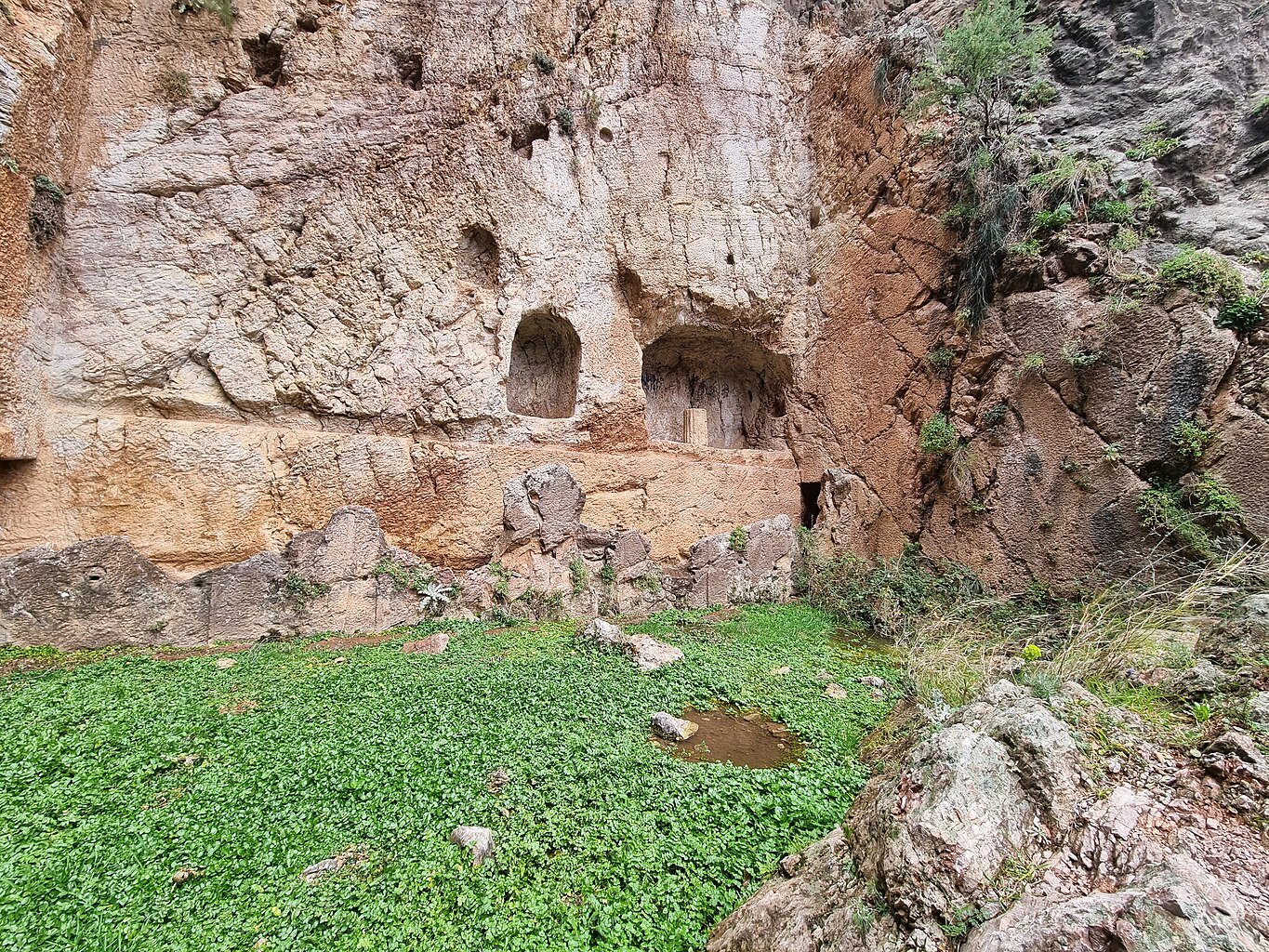
Introduction
This is no ordinary water fountain! The Castalian Spring was the sacred source of water in Delphi. Before anyone could enter the Sanctuary of Apollo to ask the Oracle a question, they had to stop here first to purify themselves.13 They believed that the spring’s cool, clear water could wash away not just dirt, but also any bad things from their soul, making them worthy of speaking to the god.20 Even the Pythia herself would wash in these waters before she gave her prophecies.
| Location | The spring is located in the ravine between the two great cliffs, the Phaedriades. You will find it along the main road, in the area between the Sanctuary of Apollo and the Sanctuary of Athena Pronaia.12 |
| Timing | The spring is an open site and can be visited at any time. |
| How to Reach There | It is about 500 meters east of the main entrance to the archaeological site, right beside the road.35 You can easily stop here on your walk between the main site and the Sanctuary of Athena Pronaia. |
| Important Tips | Look for the niches that were carved into the rock face above the fountain. Long ago, people would leave their offerings to the spirit of the spring here. While the ancient marble basin is no longer easily accessible, there is a nearby modern spout where you can often feel the cold, fresh spring water for yourself.38 It’s a wonderful way to feel a direct connection to the thousands of ancient pilgrims who stopped at this very spot. |
| Entry Fees | It is free to visit the Castalian Spring. |
| Things to Keep in Mind | According to the myths, the Castalian Spring gushed out from the ground at the very spot where Apollo killed the great serpent, Python.36 This makes the spring a key part of Delphi’s origin story and a very special place to visit. |
Fueling Your Expedition: Yummy Food in Delphi
After a long day of exploring ancient ruins and climbing mountains, every adventurer gets hungry! Luckily, the modern town of Delphi is filled with delicious places to eat, and many of them have the most incredible views you have ever seen from a restaurant table.39 Here are a few family-friendly spots to refuel:
- Taverna Vakhos: This is a wonderful, family-owned restaurant that is perfect for kids. They serve tasty, traditional Greek food and even have a special play area for little ones to enjoy. They also have lots of options for vegetarians and people who can’t eat gluten, and the view from their terrace is spectacular.40
- To Patriko Mas: Eating here feels like you’re in a beautiful secret garden. This restaurant is in a charming old stone house and has a lovely terrace where you can eat under the shade of leafy trees.40 They serve hearty Greek dishes that are perfect after a day of walking.
- Taverna Dion: This is a great spot in the center of town for classic Greek meals like moussaka and spanakopita (spinach pie). It has a friendly, welcoming feel, and you might even make friends with some of the local cats who like to hang out on the steps nearby.40
- Dionysios Souvlaki Gyro Shop: For a quick, easy, and super yummy lunch, this is the place to go! They make some of the best gyros and souvlaki in Delphi. You can grab your food to go or sit at one of their small tables. It’s fast, delicious, and won’t break your piggy bank.40
A Place to Rest Your Head: Cozy Hotels in Delphi
Staying overnight in Delphi is a fantastic idea. It allows you to visit the ancient site early in the morning before the big tour buses arrive, making you feel like you have the whole place to yourself.44 The town has many hotels, and lots of them are perfect for families. Here are a few top choices to help you plan your stay.
Table 2: Family-Friendly Hotel Guide
| Hotel Name | Price Range | Family Rooms? | Has a Pool? | Best Feature for Families |
| Amalia Hotel Delphi 45 | $$ | Yes | Yes | The best swimming pool in Delphi—perfect for cooling off after a day of exploring! |
| Fedriades Delphi Hotel 45 | $$ | Yes (up to 4 people) | No | Has special rooms for families and is right in the center of town, close to everything. |
| Kastalia Boutique Hotel 45 | $$$ | Yes (connecting rooms) | No | Has connecting rooms that can sleep a family of 5 and is one of the closest hotels to the ruins. |
| Nidimos Hotel 45 | $ | Yes | No | A great value with modern, comfortable rooms, beautiful views, and its own parking garage. |
Your Questions Answered! (FAQs)
Is Delphi fun for kids?
Yes, absolutely! Delphi is like a giant outdoor playground where amazing stories of gods, monsters, and heroes come to life. Kids love hearing the myths, seeing the giant statues in the museum, and pretending to be ancient athletes running in the stadium. The whole place feels like a real-life adventure.8
How long should we spend at Delphi?
To see the main archaeological site and the museum properly, you should plan to spend at least 3 to 4 hours.10 Many people visit on a day trip from Athens, but if you can, staying overnight is a great idea. This lets you visit the site first thing in the morning when it’s cool and quiet, before the big crowds arrive.44
What should we wear?
The most important thing to bring is a pair of comfortable walking shoes with good grip. You will be doing a lot of walking on ancient stone paths and up and down hills.26 In the spring and summer, it can get very hot and sunny, so wear light, breathable clothes like t-shirts and shorts. There is no special dress code for the site.26
What should we bring with us?
Definitely bring bottles of water to stay hydrated, especially for the climb to the stadium. Sunscreen and sun hats are a must, as there isn’t a lot of shade in the middle of the day.26 It’s also a good idea to pack some small snacks for an energy boost. And don’t forget your camera to capture all the amazing views!
Is it hard to walk around?
The archaeological site is built on the side of a steep mountain, so some parts are a bit of a climb.2 The main path, the Sacred Way, is a steady uphill walk. The final climb from the theatre to the stadium is the steepest part and can be tiring for little legs.23 The best strategy is to take your time, rest often, and enjoy the views along the way. The museum and the Sanctuary of Athena Pronaia are much flatter and easier to explore.
Also Read: 7 Amazing Places to Visit in the Eastern Sierra’s in 2025
Disclaimer
The information provided about the Best Places to Visit in Delphi is accurate as of the time of writing. However, please note that prices, facilities, and distances may vary, and it’s always best to contact the local tourism authorities or travel operators directly for the most up-to-date information.
This blog aims to provide general guidance and insights about Best Places to Visit in Delphi, but it should not be considered an endorsement of any one place over another. We encourage you to do your own research and make informed decisions based on your individual preferences and needs.

